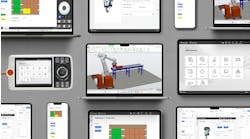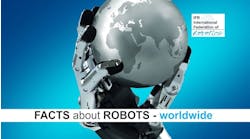DHL and Cisco's The Internet of Things Trend Report predicts that as many as 50 billion devices will be connected to the Internet by 2020 – up from 15 billion today.
That shift is expected to carry a dramatic impact on the supply chain and logistics sector… and impact that could be worth just shy of $2 trillion.
"For any organization with a supply chain or logistics operations, IoT will have game-changing consequences, from creating more 'last mile' delivery options for customers, to more efficient warehousing operations and freight transportation," the report explains.
The main benefit to the industry is the ability of the IoT to connect in real time millions of shipments being moved, tracked and stowed each day. In warehousing, connected pallets and items will be a driver for smarter inventory management.
In freight transportation, tracking and tracing of goods becomes faster, more accurate, predictive and secure while analytics of a connected fleet can help to predict asset failure and to schedule maintenance checks automatically.
Finally, connecting delivery personnel with surrounding vehicles and people can become a way of monetizing and optimizing the return trip to improve efficiency and service in last mile delivery.
To achieve this, however, there will be some key success factors required:
- Clear and standardized approach for the use of unique identifiers or 'tags' for various types of assets among different industries on a global scale entire networks before implementing new solutions – and this means substantial investment must be made
- Seamless interoperability for exchanging sensor information in heterogeneous environments
- Establishment of trust and ownership of data and overcoming privacy issues in the IoT-powered supply chain
- Clear focus on reference architecture for the IoT
- Change in business mindset to embrace the full potential of the Internet of Things
http://mhlnews.com/technology-automation/logistics-see-19-trillion-impact-iot
MH&L is an NED companion site with Penton's Manufacturing and Supply Chain Group.











